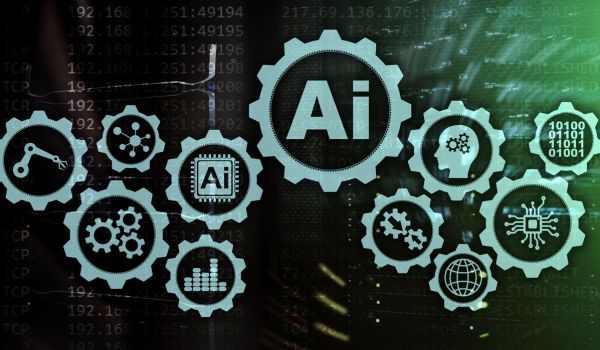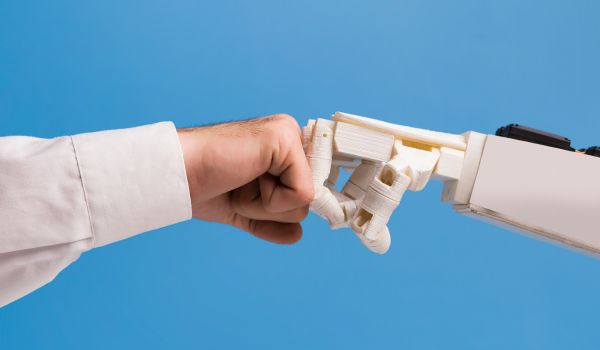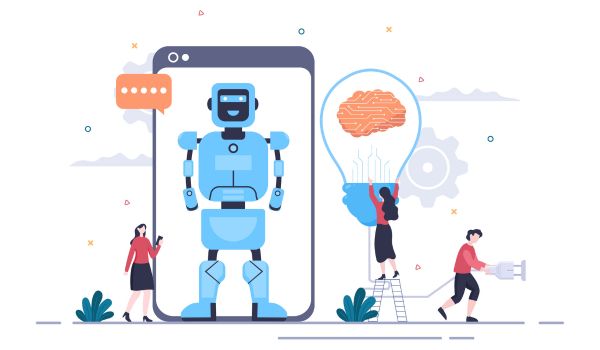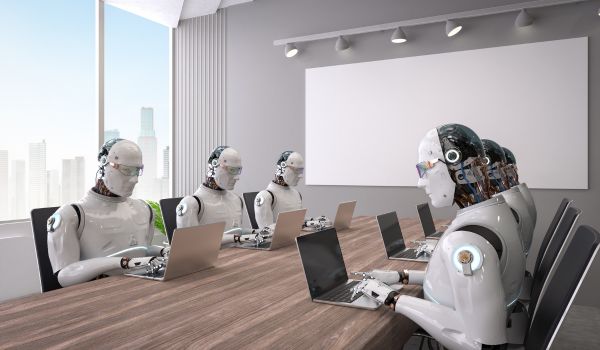In today’s fast-paced digital landscape, web design is continuously evolving. The emergence of artificial intelligence (AI) has revolutionized the way websites are created and optimized. With its advanced algorithms and machine learning capabilities, AI has transformed the traditional web design process, making it more efficient and user-centric.
AI-powered web design tools analyze user behavior, gathering valuable insights that help in creating personalized and user-friendly interfaces. By understanding user preferences and browsing patterns, AI can customize websites to deliver a personalized experience, ultimately boosting user engagement and conversion rates.
Furthermore, AI eliminates the labor-intensive tasks of coding and designing, allowing web designers to focus on more creative aspects. With AI, designers can automate repetitive processes, saving time and reducing human errors.
But AI doesn’t just benefit web designers, it also enhances the user experience. AI algorithms can adapt to user behaviors in real-time, providing recommendations and personalized content that align with their interests.
As AI continues to evolve, we can expect web design to become even more sophisticated and user-centric. The digital landscape is transforming, and AI is leading the way, revolutionizing the field of web design like never before.
Benefits of using AI in web design

AI has brought numerous benefits to the field of web design. One of the key advantages is the ability to analyze vast amounts of data and obtain valuable insights. AI-powered tools can collect and analyze user behavior, identifying patterns and trends that can inform the design process. This data-driven approach enables designers to create interfaces that are optimized for user engagement and conversion.
Another benefit of using AI in web design is the automation of repetitive tasks. Traditionally, web designers would spend hours coding and designing websites from scratch. With AI, however, these tasks can be automated, saving designers time and effort. This automation allows designers to focus on more creative aspects of the design process, resulting in more innovative and visually appealing websites.
Additionally, AI can improve the efficiency of the web design process. By automating certain tasks, AI reduces the chances of human errors and inconsistencies. This leads to faster turnaround times and a more streamlined workflow.
Examples of AI-powered web design tools and platforms

The market is flooded with AI-powered web design tools and platforms that have revolutionized the way websites are created. One such example is Wix ADI. Wix ADI leverages AI to create personalized websites based on user inputs. It analyzes the content provided by the user and generates a custom website design that aligns with their preferences. This eliminates the need for extensive coding and designing, making website creation accessible to even those without technical skills.
Another popular AI-powered web design tool is The Grid. The Grid utilizes AI algorithms to automatically create websites based on user-provided content and preferences. It analyzes the content and adapts the design in real-time, ensuring a personalized and user-friendly experience. The Grid’s AI capabilities enable it to continuously improve the design based on user feedback, making it a powerful tool for creating visually stunning websites.
In addition to these tools, AI has also been integrated into popular CMS platforms like WordPress and Drupal. These platforms leverage AI to provide content recommendations, personalized user experiences, and advanced analytics. AI-powered plugins and extensions are also available, allowing web designers to enhance their websites with AI-driven features and functionality.
These examples highlight the diverse applications of AI in web design and the wide range of tools available to designers. With AI-powered platforms and tools, web designers can create websites that are tailored to the needs and preferences of their target audience.
The impact of AI on user experience and interface design

AI has had a significant impact on user experience (UX) and interface design. By analyzing user behavior and preferences, AI algorithms can adapt the user interface in real-time, providing a personalized experience. For example, AI can adjust the layout, color scheme, and content based on individual user preferences, resulting in a more engaging and intuitive user experience.
AI also enables designers to create interfaces that are optimized for user engagement and conversion. By analyzing user behavior, AI can identify areas of the website that are performing well and areas that need improvement. This data-driven approach allows designers to make informed design decisions, resulting in interfaces that are more effective in achieving business goals.
Furthermore, AI can enhance the accessibility of websites. AI-powered tools can analyze user interactions and provide recommendations to improve the accessibility of the interface. For example, AI can suggest alternative text for images, provide captions for videos, and optimize the website for screen readers. These accessibility features ensure that websites are inclusive and accessible to all users.
In summary, AI has revolutionized user experience and interface design by providing personalized experiences, optimizing interfaces for engagement and conversion, and enhancing accessibility.
AI and personalization in web design

Personalization is a key aspect of modern web design, and AI plays a crucial role in delivering personalized experiences. AI-powered tools can analyze user data and preferences to create customized interfaces that cater to individual needs and interests.
One way AI achieves personalization is through content recommendations. By analyzing user behavior and preferences, AI algorithms can suggest relevant content to users, increasing engagement and conversion rates. For example, an e-commerce website can use AI to recommend products based on a user’s purchase history and browsing behavior.
AI also enables dynamic content creation, where the content of a website can be customized in real-time based on user interactions. For example, a news website can use AI to adapt the content based on a user’s location, interests, and browsing history. This dynamic content creation ensures that users are presented with relevant and engaging content, enhancing their overall experience.
Additionally, AI can personalize the user interface itself. By analyzing user preferences, AI algorithms can adapt the layout, color scheme, and navigation of a website to match individual preferences. This level of personalization creates a more engaging and intuitive user experience.
Overall, AI-driven personalization in web design enhances user engagement, increases conversion rates, and delivers tailored experiences that resonate with individual users.
The role of AI in responsive web design

Responsive web design is essential in today’s mobile-first world, and AI can play a significant role in optimizing websites for different devices and screen sizes. AI-powered tools can automatically adapt the layout, content, and functionality of a website based on the user’s device.
For example, AI algorithms can analyze the screen size and resolution of a user’s device and adjust the layout accordingly. This ensures that the website remains visually appealing and functional across different devices, eliminating the need for separate mobile and desktop versions.
AI can also optimize the performance of a website for different devices. By analyzing user behavior and device capabilities, AI algorithms can prioritize and load content that is most relevant to the user’s device, resulting in faster page load times and a smoother browsing experience.
In summary, AI enhances responsive web design by automatically adapting the layout, content, and performance of a website based on the user’s device, ensuring a consistent and optimized experience across all devices.
Challenges and limitations of AI in web design

While AI has brought significant advancements to web design, it also presents certain challenges and limitations. One of the main challenges is the need for high-quality data. AI algorithms rely on vast amounts of data to learn and make accurate predictions. If the data used is incomplete or biased, it can lead to inaccurate results and suboptimal designs. Therefore, ensuring the availability of high-quality and unbiased data is crucial for the success of AI in web design.
Another challenge is the lack of creativity in AI-generated designs. While AI can automate repetitive tasks and generate designs based on data, it still lacks the creative intuition and aesthetic sense of human designers. AI-generated designs may lack the human touch and emotional appeal that can make a design truly remarkable. Therefore, it is important for designers to collaborate with AI and use it as a tool to enhance their creativity rather than relying solely on AI-generated designs.
Furthermore, the ethical implications of AI in web design should not be overlooked. AI algorithms can make decisions that impact user experiences, such as personalization and content recommendations. It is important to ensure that AI is used ethically and transparently to avoid privacy concerns and unintended biases.
How to incorporate AI into your web design process

Incorporating AI into the web design process can be a game-changer. Here are a few steps to get started:
1. Identify the areas of your web design process that can benefit from AI. This could be automating repetitive tasks, analyzing user data, or enhancing personalization.
2. Research and evaluate AI-powered web design tools and platforms that align with your needs and goals. Consider factors such as ease of use, scalability, and integration capabilities.
3. Experiment and iterate. Start small and gradually incorporate AI into your workflow. Monitor the impact of AI on user engagement, conversion rates, and overall design efficiency. Continuously refine your approach based on the insights gained.
4. Collaborate with AI. Remember that AI is a tool that enhances your creativity as a designer. Work alongside AI to explore new possibilities and push the boundaries of web design.
5. Stay updated on the latest advancements in AI-driven web design. Attend conferences, read industry publications, and engage with the design community to stay informed about new tools, techniques, and best practices.
By embracing AI in your web design process, you can streamline workflows, enhance user experiences, and stay ahead of the curve in the ever-evolving digital landscape.
Future trends and developments in AI-driven web design

The future of AI-driven web design is bright, with several trends and developments on the horizon. One of the key trends is the integration of AI with voice user interfaces (VUIs). As voice assistants become more prevalent, AI algorithms will play a crucial role in designing user interfaces that are optimized for voice interactions. This includes designing interfaces that understand natural language, provide relevant responses, and adapt to user preferences.
Another trend is the use of AI in augmented reality (AR) and virtual reality (VR) experiences. AI algorithms can analyze user interactions in AR and VR environments and adapt the interface in real-time to provide a more immersive and personalized experience. This includes adjusting the visual elements, navigation, and content based on user preferences and behaviors.
Furthermore, the use of generative AI in web design is expected to grow. Generative AI algorithms can create designs from scratch based on input parameters, allowing designers to quickly explore various design possibilities. This can significantly speed up the design process and enable designers to experiment with new and innovative ideas.
In summary, the future of AI-driven web design holds exciting possibilities, including the integration of AI with voice interfaces, AR, and VR, as well as the use of generative AI for rapid design exploration.



